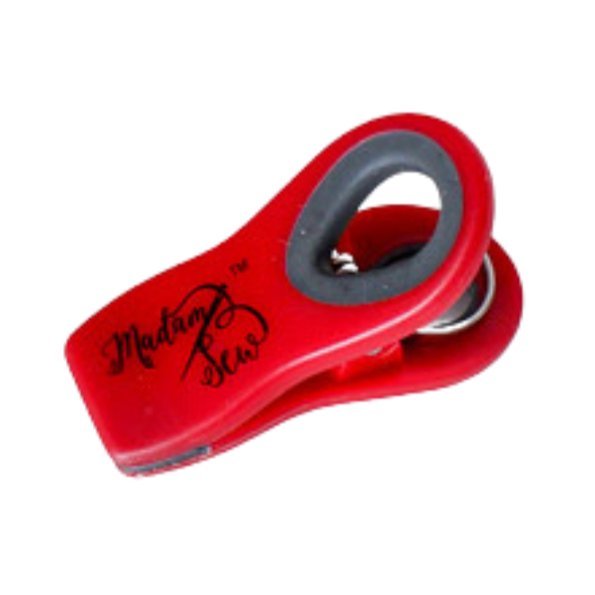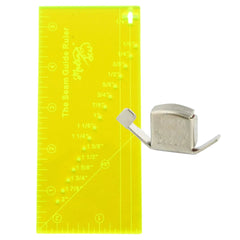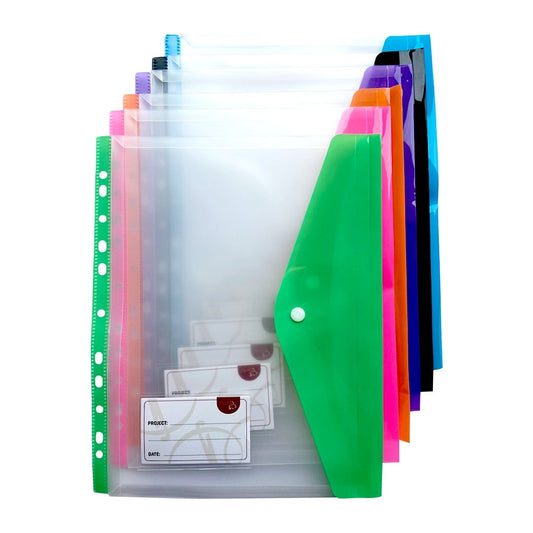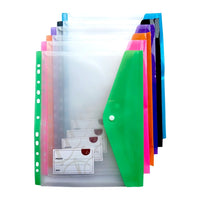Everything you need to know about Madam Sew's Sliding Measuring Gauge
This ruler is a 6 inch aluminum gauge with a red sliding spacer to quickly and consistently measure short spaces.
The red plastic spacer is adjustable in 1/16 inch increments and allows you to pre-determine the dimension of a seam or the distances between button holes and to transfer them fast and precisely. It is adjustable, but stays in place for repeated marking. Simply lift the gauge up and down to check your measurements along a hem or seam.
VIDEO TUTORIAL
VARIOUS USES OF THE SLIDING MEASURING GAUGE
FOLD HEMS
Set your measurement: slide the red plastic pointer to where you need it.
Accurately fold over the fabric to create the hem. Position the red slider against the edge of your fabric and the end of the gauge on the fold. Lift the gauge up and down to check your measurements for the entire length of the fold.
Mark, pin or press down the fold.
MARK SEAM ALLOWANCES
Set your measurement: slide the red plastic pointer to where you need it.
Line up the gauge on the fabric piece and the red slider at the edge of your fabric so you can mark on the edge of the seam allowance. Lift the gauge up and down along the edge to mark the entire seam allowance.If you need a ¼ inch seam allowance you can just use the width of the gauge to measure and mark.
MARK BUTTON PLACEMENT
First, determine 3 measurements: the distance from the edge, the distance between the button holes, and the size of the buttonhole itself.
Position the red plastic pointer and start marking these
With the red pointer and the edge of the gauge these measurements will be more accurate than with a measuring tape.
PLEATS AND TUCKS
Pleats and tucks demand a lot of marking, pinning and ironing before you can start sewing them down. A sliding gauge is a life saver when you are preparing these. Pleats are often better known than tucks. Tucks are stitched at their base. This way the folds remain secured. You might be familiar with the tiny pin tucks, but there are actually various different kinds of tucks. Have you heard of cross tucks, shell tucks or released tucks? There are also several different types of pleats: box pleats and knife pleats are probably the most common. Have you already sewn inverted pleats, accordion pleats, pinched pleats or bias pleats?
DRAW A CIRCLE OR A CURVE
Place the tip of a pencil or a big needle in the hole in the upper left corner, and place an erasable marking pen behind the red slider. Then use the gauge as a compass to trace a circle or a curve.
EXTRA FEATURES
With the hole in the upper right corner you can secure the gauge with a pin. The red slider on the Measuring Gauge can also be anchored to your project by sliding a pin through the two small holes in the red plastic.
The point at the upper left corner (0 centimeter) can be used for turning points and pressing them out.
The 2 columns of the gauge can be used for a quick ¼ inch or ⅜ inch marking. The “inch” column is exactly ¼ inch wide.
The “centimeter” column is 5/16 inch wide.
The inch side has additional notches to make marking even easier.
INTERESTED IN THE SLIDING MEASURING GAUGE?
Sliding Measuring Gauge
You can set the measurement that you want and quickly measure ⅝”, ¼” or 3/4” effortlessly. Measuring correctly can have an enormous impact in the finished look of any sewing project, so measuring accurately is a must!
Your Price:
You can set the measurement that you want and quickly measure ⅝”, ¼” or 3/4” effortlessly. Measuring correctly can have an enormous impact in the finished look of any sewing project, so measuring accurately is a must!









/2ad3e1146b364c0e87e39519efe50eac/image10.jpeg)





























